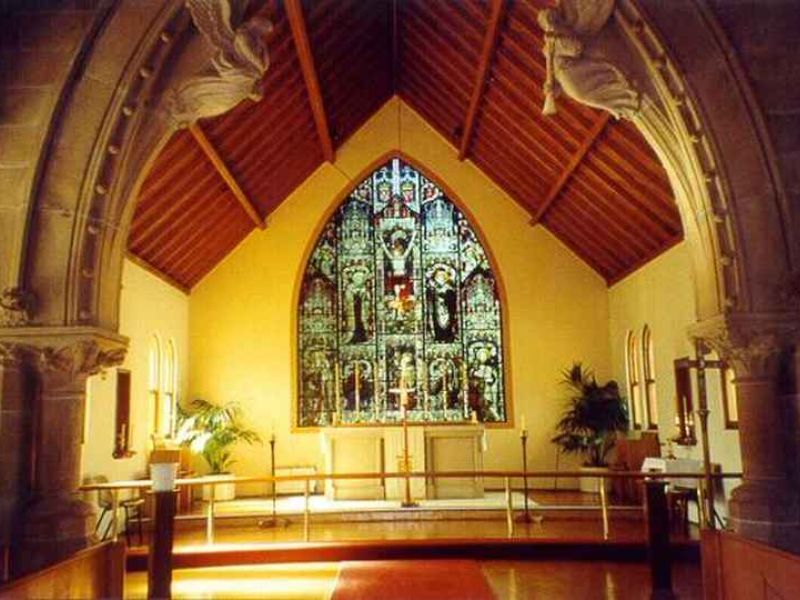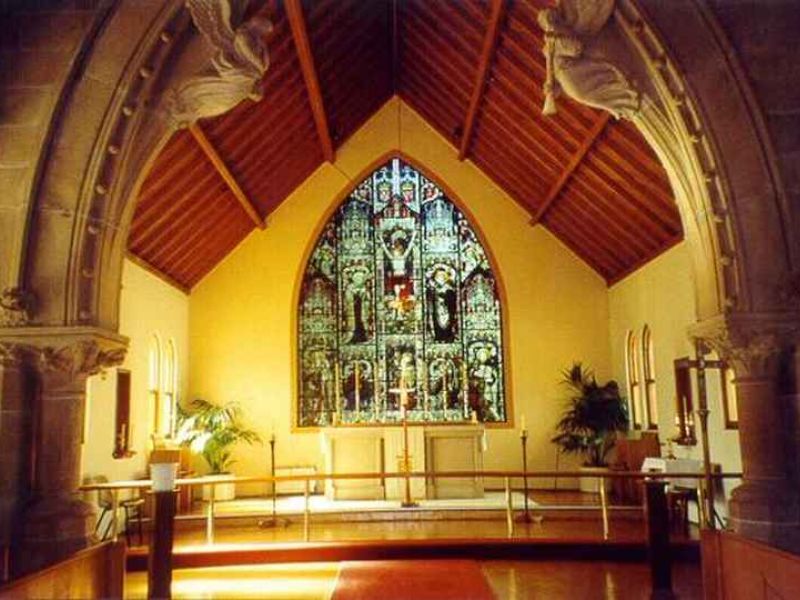All Saints Ainslie War Memorial Window
The church is the former mortuary railway station from Rookwood Necropolis and Cemetery in Sydney. Originally constructed in 1868 it was dismantled after a fire and re-erected in Canberra in 1958 as All Saints Anglican Church. A parishioner painted the east window on the understanding it was temporary until a larger stained glass window could be installed.
Lady de L'Isle, wife of a Governor-General, often visited the church and on one occasion brought Sir John Betjeman, Poet Laureate, who expressed the opinion that a large stained glass window should be installed in the space. Some years later a representative of the the church visited Sir John in England where he (Sir John) was Curator of Anglican Church Treasures (or something similar) and who remembered the conversation. Sir John offered the church the choice of one of six windows which had been removed from disused churches and put into storage.
The window selected was originally put into St. Clements Attercliffe, a suburb of Sheffield in 1917 as a war memorial to local men. The area it was in was bombed during World War II and later became industrialised. Use of the church declined and it was closed down and demolished in 1963.
The artist who created the window was Charles Eamer Kempe who was renowned for his stained glass windows. The design includes his wheat sheaf trademark but it is possible that Kempe may have died before this particular window was created and that it was not his own work but that of his studio, which continued after his death.
Information supplied by Michael Southwell-Keely


